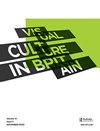Mass Photography: Collective Histories of Everyday Life by Annebella Pollen
Q2 Arts and Humanities
引用次数: 0
Abstract
Photographic projects claiming to represent Britain, or even the world, on one day pose fascinating questions about visual culture: not least, what sense scholars can make of them. In Mass Photography: Collective Histories of Everyday Life, Pollen addresses this question through a finely tuned study of the One Day for Life (ODfL) project. This fundraising campaign, launched by the cancer charity Search 88 in June 1987, amassed 55,000 photographic prints on August 14, 1987, taken mostly by women; the winning entries were subsequently published twelve weeks later in a book entitled One Day for Life. Foregrounding the ODfL project, but engaging also with similar analogue and digital initiatives, Pollen establishes the academic significance of mass photography, challenging a continuing tendency to dismiss domestic and amateur photography as banal and trite. She considers how we might interpret mass photography, exploring the historically specific meanings of the ODfL project and what it reveals about ‘more enduring cultural performances, about charity, identity, memory, emotion and competition’ (p. 3). Strategies for managing the potentially overwhelming number of photos amassed in ODfL, and for evaluating the photographic practices and outputs that constituted this project, are a necessary prelude to interpretation and are discussed in detail. Pollen usefully identifies two types of approach to mass photography. First, those that focus on what photos show and that analyse pictorial subjects. Second, ethnographic or anthropological approaches that address what photographs do. Pollen rejects the first type of approach because images are often inadequate indicators of meaning and purpose; as she points out, cement mixers can stand for grief and kittens for cancer. Adopting the second, Pollen explains that ‘photographs – inscribed on the reverse as well as displaying an image on the front – may be seen as tangible and purposeful performances with work to do as well as images to show’ (p. 13). The book, therefore, focuses on stories about, and practices around, the photographs because, in mass photography projects, ‘photos are made meaningful through the desires they enact, the communities they create, the public concerns they address, the memories they anticipate’ (p. 219). Pollen presents the results of several layers of research. There is a cultural biography of ODfL embracing its aspirations and plans; sponsors and publicity; submission, selection and judging processes, including how 55,000 images were reduced to a shortlist of 4000 in four days; the publicity and launch of the book featuring the winning entries; the folding of the charity on October 31, 1991; and the archiving of the photos and related documentation in the Mass Observation Archive. Tackling the huge quantities of photos and materials amassed by the ODfL project, Pollen leads us through the different elements of her scrutiny of its archive: what is in it, the technique and大众摄影:日常生活的集体历史,作者:Annebella Pollen
有一天,声称代表英国甚至世界的摄影项目提出了关于视觉文化的迷人问题:尤其是学者们能理解它们的意义。在《大众摄影:日常生活的集体历史》一书中,Pollen通过对“生命的一天”(ODfL)项目的细致研究来解决这个问题。这项由癌症慈善机构Search 88于1987年6月发起的筹款活动,在1987年8月14日收集了55,000张照片,其中大部分是女性拍摄的;这些获奖作品随后在12周后出版了一本名为《一生的一天》的书。在ODfL项目的前景中,Pollen也参与了类似的模拟和数字倡议,建立了大众摄影的学术意义,挑战了将国内和业余摄影视为平庸和陈腐的持续趋势。她考虑了我们如何解释大众摄影,探索ODfL项目的历史特定意义,以及它揭示了“更持久的文化表演,关于慈善、身份、记忆、情感和竞争”(第3页)。管理ODfL中积累的潜在压倒性数量的照片的策略,以及评估构成该项目的摄影实践和产出的策略,是解释的必要前奏,并进行了详细讨论。花粉有效地识别了两种大规模摄影的方法。首先,那些专注于照片所显示的内容并分析图像主题的课程。第二,民族志或人类学的方法来解决照片的作用。花粉拒绝第一种方法,因为图像往往不足以表明意义和目的;正如她所指出的,水泥搅拌机可以代表悲伤,小猫可以代表癌症。采用第二种说法,波伦解释说,“照片——在背面刻上文字,在正面展示图像——可能被视为有形的、有目的的表演,既要展示图像,也要做工作”(第13页)。因此,这本书关注的是关于照片的故事和实践,因为在大众摄影项目中,“照片通过它们所体现的愿望、它们所创造的社区、它们所关注的公众问题、它们所期待的记忆而变得有意义”(第219页)。花粉是几层研究的结果。有一本关于ODfL的文化传记,包含了它的抱负和计划;赞助及宣传;提交,选择和评审过程,包括如何在四天内将55,000张图片减少到4,000张入围名单;宣传及推出以得奖作品为主题的书籍;1991年10月31日慈善机构的解散;并将照片和相关文件存档于群众观测档案。处理由ODfL项目积累的大量照片和材料,Pollen带领我们通过她对其档案的审查的不同元素:其中的内容,技术和
本文章由计算机程序翻译,如有差异,请以英文原文为准。
求助全文
约1分钟内获得全文
求助全文
来源期刊

Visual Culture in Britain
Arts and Humanities-Visual Arts and Performing Arts
CiteScore
0.60
自引率
0.00%
发文量
1
 求助内容:
求助内容: 应助结果提醒方式:
应助结果提醒方式:


